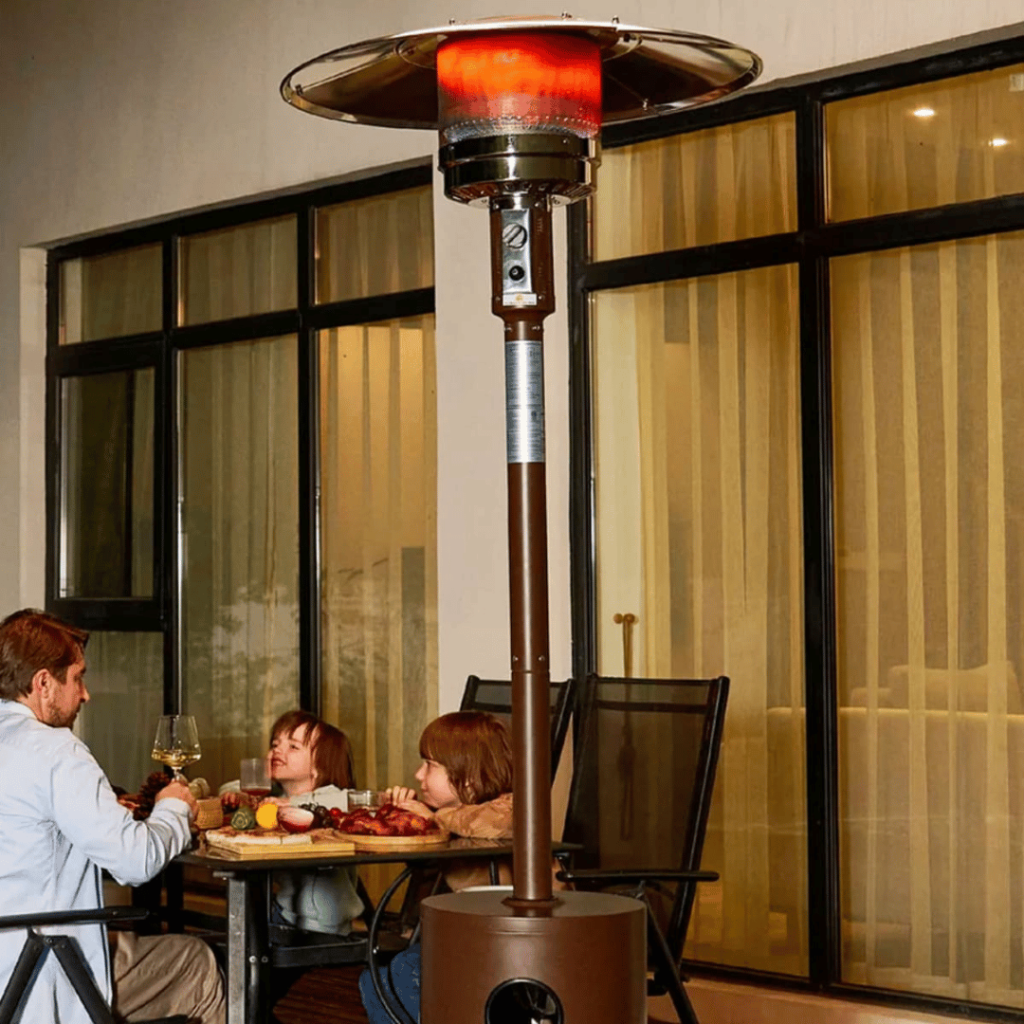
Patio Heaters
Outdoor Patio Heaters
We all love spending time in our gardens but sometimes even putting that sweater on doesn’t help and you have to retreat to the warmth of the house. When it comes to extending your time outdoors, patio heaters can be a great addition to your garden, helping you brave the elements that little bit longer.
With various options available in the market, understanding the different types can help you choose the best one for your needs. Here, we’ll explore solid fuel, gas, and different types of electric heaters—shortwave, mediumwave, and longwave—comparing their features and ideal use cases.
Solid Fuel Patio Heaters
Solid fuel patio heaters use materials like wood or charcoal to generate their heat. Typically constructed as fire pits or chimineas, these heaters provide a rustic atmosphere, providing the charm and coziness of a real open flame.
The primary advantage of solid fuel patio heaters is the cost as they tend to be relatively inexpensive to buy or build. Additionally, as they rely on easily accessible fuel, it’s relatively easy and low-cost to build a healthy stockpile. They can also produce a good amount of heat.
However, they require more effort to start and maintain. You’ll need to stock up on fuel and manage ash and embers, making them more suitable for larger outdoor areas like backyards, rather than small patios where easy cleanup is preferred. Additionally, that heat is by no means instant and it can take a while for them to get going properly.
Gas Patio Heaters
Gas patio heaters are among the most popular choices for outdoor heating. Available in both propane and natural gas models, they deliver instant heat and are easy to operate. Featuring a sleek design, these heaters can fit seamlessly into modern outdoor spaces. The primary advantages include their convenience, higher heat output, and portability if you choose a propane model. However, the initial investment in gas heaters can be higher than other options, and they may require regular maintenance. Gas patio heaters are ideal for open patios, decks, and commercial settings since they can provide consistent warmth across a wider area.
Shortwave Infrared Electric Patio Heaters
Shortwave electric patio heaters use infrared technology to generate heat quickly and efficiently. These heaters emit a warm glow and typically provide instant warmth with the powerful tungsten bulbs coming up to temperature really quickly, making them suitable for immediate use. One of the main benefits is their energy efficiency, as they heat objects and people rather than simply warming the air. However, shortwave heaters are typically more effective in smaller areas and require access to electricity, limiting their placement options. They work best in small areas as their heat is only felt over short distances. However, they are really useful for exposed positions as environmental conditions such as wind have very little impact on their effectiveness. You do need to bare in mind though, that the shortwave infrared radiation is is pretty intense and therefore they’re best for short term use.
Mediumwave Electric Patio Heaters
Mediumwave electric heaters offer a balance between efficient heating and broader warmth distribution compared to shortwave models. They release an extended wavelength of infrared radiation that heats the surrounding air and objects more evenly. These heaters are better suited for medium-sized outdoor areas, such as patios, gardens, or dining areas where people gather. One of the pros is that they function quietly, creating a pleasant ambiance without combustion noise. However, they take a bit longer to reach maximum heating efficiency, which might not suit everyone’s immediate heating needs.
Longwave Electric Patio Heaters
Longwave electric patio heaters are designed for larger outdoor spaces and deliver a softer, broader warmth that can be felt uniformly across an area. Unlike their shortwave and mediumwave counterparts, longwave heaters operate at lower temperatures and are often wall-mounted or suspended, making them ideal for applications where floor space is a concern. They work best in larger patios, outdoor restaurants, or public spaces. The primary advantage of longwave heaters is their suitability for extended use, as they maintain a comfortable temperature without overheating. However, they may take longer to reach optimal heating levels and can be less effective in windy conditions.
With these five types of patio heaters, you can choose the best one based on your needs, outdoor space, and personal preferences. Whether you’re entertaining guests or just trying to stay warm during cooler evenings, there’s a perfect heater out there to enhance your outdoor experience.







